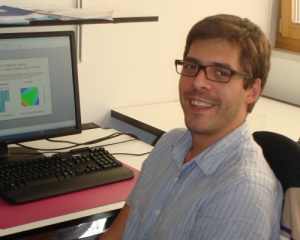Meier, J., Sousa, V.C., Marques, D.A., Selz, O.M., Wagner, C.E., Excoffier, L. & Seehausen, O. (2016) Demographic modeling of whole genome data reveals parallel origin of similar Pundamilia cichlid species after hybridization.
Molecular Ecology,
26(1), 123-141. DOI:10.1111/mec.13838 (IF2016 6,086; Q1 Ecology)
NON-cE3c affiliated
Modes and mechanisms of speciation are best studied in young species pairs. In older taxa, it is increasingly difficult to distinguish what happened during speciation from what happened after speciation. Lake Victoria cichlids in the genus Pundamilia encompass a complex of young species and polymorphic populations. One Pundamilia species pair, P. pundamilia and P. nyererei, is particularly well suited to study speciation because sympatric population pairs occur with different levels of phenotypic differentiation and reproductive isolation at different rocky islands within the lake. Genetic distances between allopatric island populations of the same nominal species often exceed those between the sympatric species. It thus remained unresolved whether speciation into P. nyererei and P. pundamilia occurred once, followed by geographical range expansion and interspecific gene flow in local sympatry, or if the species pair arose repeatedly by parallel speciation. Here, we use genomic data and demographic modelling to test these alternative evolutionary scenarios. We demonstrate that gene flow plays a strong role in shaping the observed patterns of genetic similarity, including both gene flow between sympatric species and gene flow between allopatric populations, as well as recent and early gene flow. The best supported model for the origin of P. pundamilia and P. nyerereipopulation pairs at two different islands is one where speciation happened twice, whereby the second speciation event follows shortly after introgression from an allopatric P. nyererei population that arose earlier. Our findings support the hypothesis that very similar species may arise repeatedly, potentially facilitated by introgressed genetic variation.

